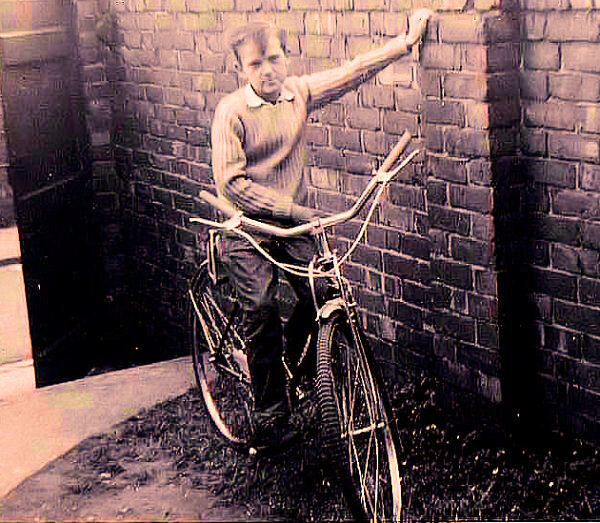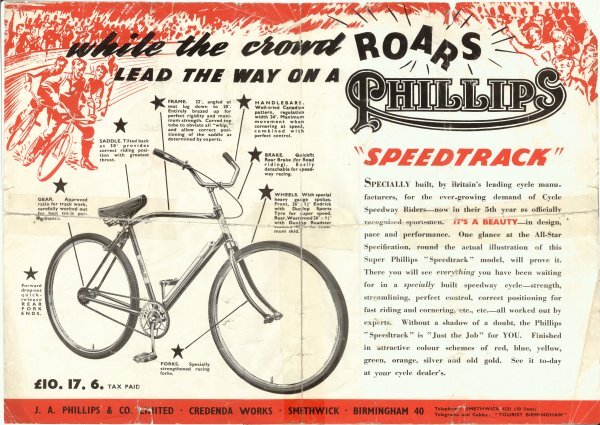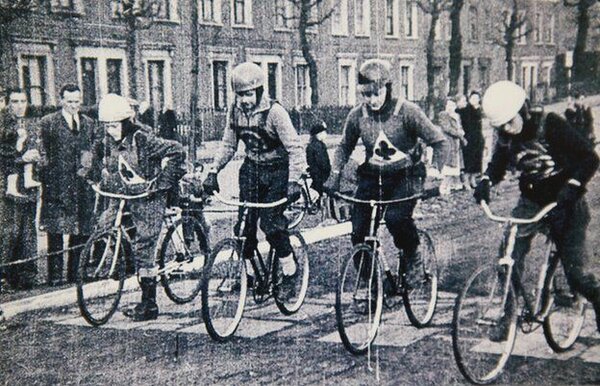- Feedback
- View
Re:
Thanks! I make all this stuff up you know. It takes me ages on Photoshop to fake all the photos.
1950s Vintage "Cycle Speedway" bike fitted with Mudguards and Brakes:
Phillips Speed Track brochure:
Thanks! I make all this stuff up you know. It takes me ages on Photoshop to fake all the photos.
1950s Vintage "Cycle Speedway" bike fitted with Mudguards and Brakes:
Phillips Speed Track brochure:


